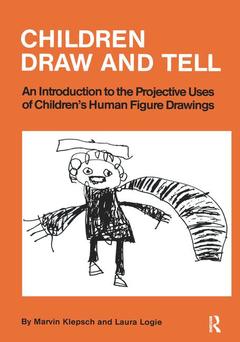First published in 1988. Child therapists have long been fascinated by children's human figure drawings and what they reveal about self-image, feelings, and' family relation ships. Now this comprehensively researched volume provides a valuable introduction to using children's human figure drawings as projective measures in a variety of settings. The principles for interpreting drawings, as well as general and specific indicators, are illustrated in 85 children's drawings. Part I on The Theory deals with the background of projective psychology, discussing art as a projective technique and emphasizing that all behavior, including drawings, reflects personality, attitudes and values. The authors examine the major methods of obtaining diagnostic information and recommend the use of several methods for best results. Part II on The Application examines in detail the projective use of children's human figure drawings to evaluate personality, relationships (particularly in families), group values, and attitudes. In each area, research is presented, directions for administration of various tests are given, and guidelines for interpretation are offered. Significant factors are revealed in numerous children's drawings, accompanied by clinical comments. Of special interest is the presentation of original research on group values among Canadian Indian (Saskatchewan Cree) children and on attitudes of young children toward teachers, doctors and other authority figures as revealed in human figure drawings. For psychologists, social workers, teachers and other child-care professionals, as well as students in these fields, this is an indispensable basic guide to interpreting human figure drawings.




